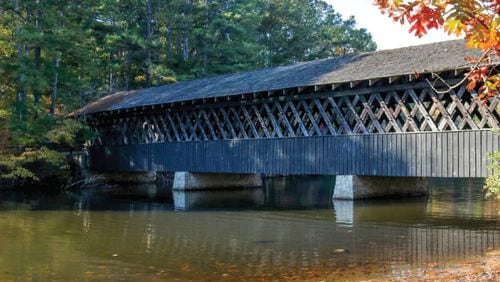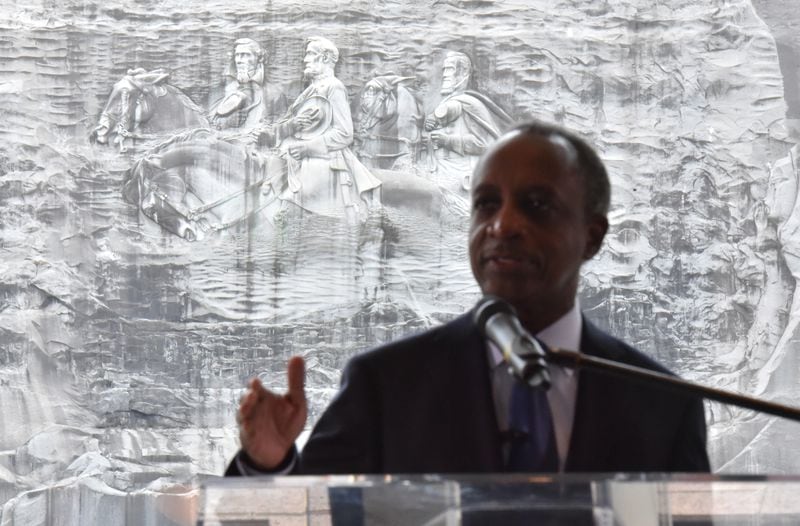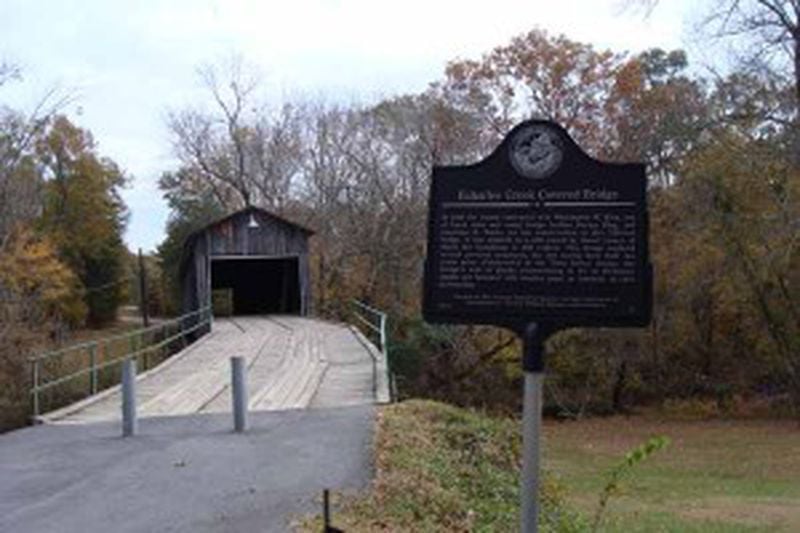Several years ago, state officials balked at a proposal to put a bell tower atop Stone Mountain in honor of Martin Luther King Jr. and his 1963 "I Have a Dream" speech, which proclaimed that freedom would one day ring from the top of the granite edifice.
Such a monument would clash with the legislated purpose of the state-owned park as a memorial to the Confederacy, the park’s all-white governing board decided.
And so the idea went into hibernation.
One of the state’s most popular tourist attractions, embedded in a sea of African-American neighborhoods, Stone Mountain Park continues to struggle with an identity that includes being the 1915 site of the second coming of the Ku Klux Klan.
It remains vulnerable to boycotts. Stacey Abrams launched her Democratic campaign for governor by recommending the removal of the massive carving of Confederate leaders on the mountain's side. A 2016 clash between white supremacists and counter protesters, egged on in part by Russians with Twitter accounts, briefly closed the park. A Feb. 2 rematch, on the day before the Super Bowl in Atlanta, has been threatened.
But change may be afoot.
On Tuesday, Jan. 15, the actual birthday of Martin Luther King Jr., the Stone Mountain Memorial Association will take up a proposal to put the name of King on a structure within the confines of the park. Specifically, a covered bridge built in 1893.
The reference won’t be to MLK, but to Washington W. King, bridge-builder extraordinaire. The bridge, originally built in Athens and marked for abandonment, was relocated to the park in 1965. The date is important.
That’s five years before the completion of the bas relief carving that has become the state’s most famous anachronism. It was part of the beginning.
If the resolution is approved, 54 years after the bridge’s arrival, the park will publicly acknowledge an open secret — that King was an African-American, part of a multi-generation family of famous, Atlanta-based bridge-builders who helped reconnect Georgia and other Southern states after the devastation of the Civil War.
“The signage they put up in 1965 did not reflect that,” said Bill Stephens, CEO of the park’s governing board. The resolution will also recommend that the bridge be placed on the National Register of Historic Places.
Yes, the re-christening of an old bridge may sound like small beer, and long overdue, too. And you’d be right. History can sometimes be a blitzkrieg, but prying Stone Mountain away from the Lost Cause has been a long slog. And Tuesday’s resolution would set an important precedent.
“This action shows that the board supports additions to the park. We’re not subtracting anything from the Confederate monuments or the history of Stone Mountain Park,” Stephens said. “We’re just adding to it. And we didn’t know we had this treasure of history until we did this study of it.”
Stephens, incidentally, was the one who pitched the MLK bell tower in 2015. "It's still on a backburner," he said.
The covered bridge story starts with Gov. Nathan Deal’s 2017 appointment of DeKalb County CEO Michael Thurmond, a Democrat, as the only African-American on the Stone Mountain Park board.
Thurmond is a history buff, and immediately began pushing for a rebranding of Stone Mountain – an effort supported by the park’s private management company, which has long recognized that the Confederacy is no longer a commercially viable concept, even in the South. Last year, Thurmond gave his “state of DeKalb County” speech at the park. He encouraged ceremonies on the mountain marking the 50th anniversary of King’s assassination.
Credit: HYOSUB SHIN / AJC
Credit: HYOSUB SHIN / AJC
Along the way, Thurmond caught a local historical seminar in the old DeKalb courthouse. The speaker mentioned the King covered bridge at Stone Mountain, and its place in African-American history.
“I had no idea that it had been built by a black man,” Thurmond said. Yet he knew the bridge well. He’d ridden across it until he was 12 years old, in the bed of a pick-up truck driven by his father, an Athens seller of vegetables.
“Dark, rickety, you could see the water. The planks would lift up as you rode over them. They were loose,” Thurmond said in an interview this week. “I can still hear it. I can hear the bridge. I can hear the slats. They were loose. Why were they loose?”
Until 1963, when it was damaged in a flood, the 200-foot, one-lane bridge crossed the Oconee River, linking downtown Athens to the northern part of Clarke County, the white city to black farmers. The bridge was also a crucial link between the University of Georgia campus and Effie’s, a famous local brothel, Thurmond remembered.
Last year, the DeKalb CEO went to Stephens and Carolyn Meadows, who chairs the Stone Mountain board, with an idea. They agreed to fund a historical vetting of the Washington King bridge. The report was finished last week. (Thurmond left the Stone Mountain board in December.)
King, who died in 1910, was the son and father of a bridge-builder. The historical report, conducted by New South Associates, refers to the Stone Mountain bridge as “an excellent example of a Town truss covered bridge.” In Georgia, 14 covered bridges still stand. Four of them were built by King.
The report notes that the relocation of the covered bridge to Stone Mountain was part of an effort to make Stone Mountain Park tourist friendly. Authorities wanted something more than just a corpse-less cemetery.
“Not satisfied with just a memorial to the leaders of the Confederacy, Stone Mountain and the surrounding undeveloped acreage represented an opportunity to display southern history and culture in a new way,” the report says.
Stephens, the CEO of the park’s governing board, has latched onto those lines. “It’s interesting to me that in 1963, according to the report and the history we were able to uncover, the Stone Mountain Memorial Association was looking for a way to broaden the story they were telling. Even back then, people were pondering how to tell a broader story.”
Back in 1963, park authorities sought something along the lines of two other historical tourist traps, Jamestown and Colonial Williamsburg. Both are in Virginia, and both have survived by telling a more honest, multi-cultural story of their origins.
It is still possible for Stone Mountain Park to move in that direction. What has happened so far has been accomplished with the quiet awareness of Governor Deal, who leaves office tomorrow.
That MLK bell tower still calls. But moving further toward a multi-cultural Stone Mountain Park will require an overt green light from the next governor.
It’s worth remembering that Brian Kemp, like Michael Thurmond, is an Athens native. The governor-elect was born in 1963, the same year the King bridge was decommissioned, and so he probably never experienced the clacking of its rickety slats.
But he knows the importance of bridging gaps.
***
Read the covered bridge report here:
About the Author










